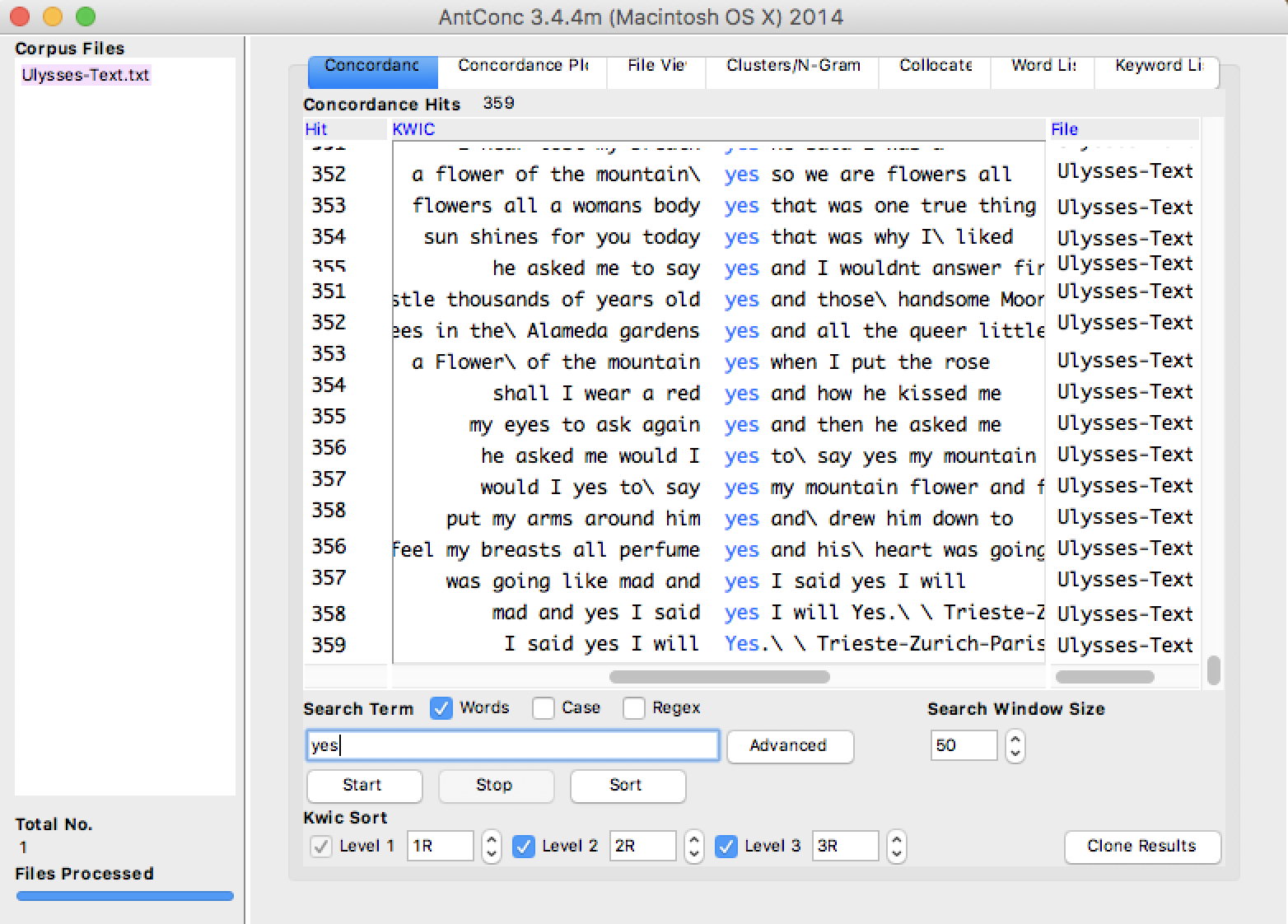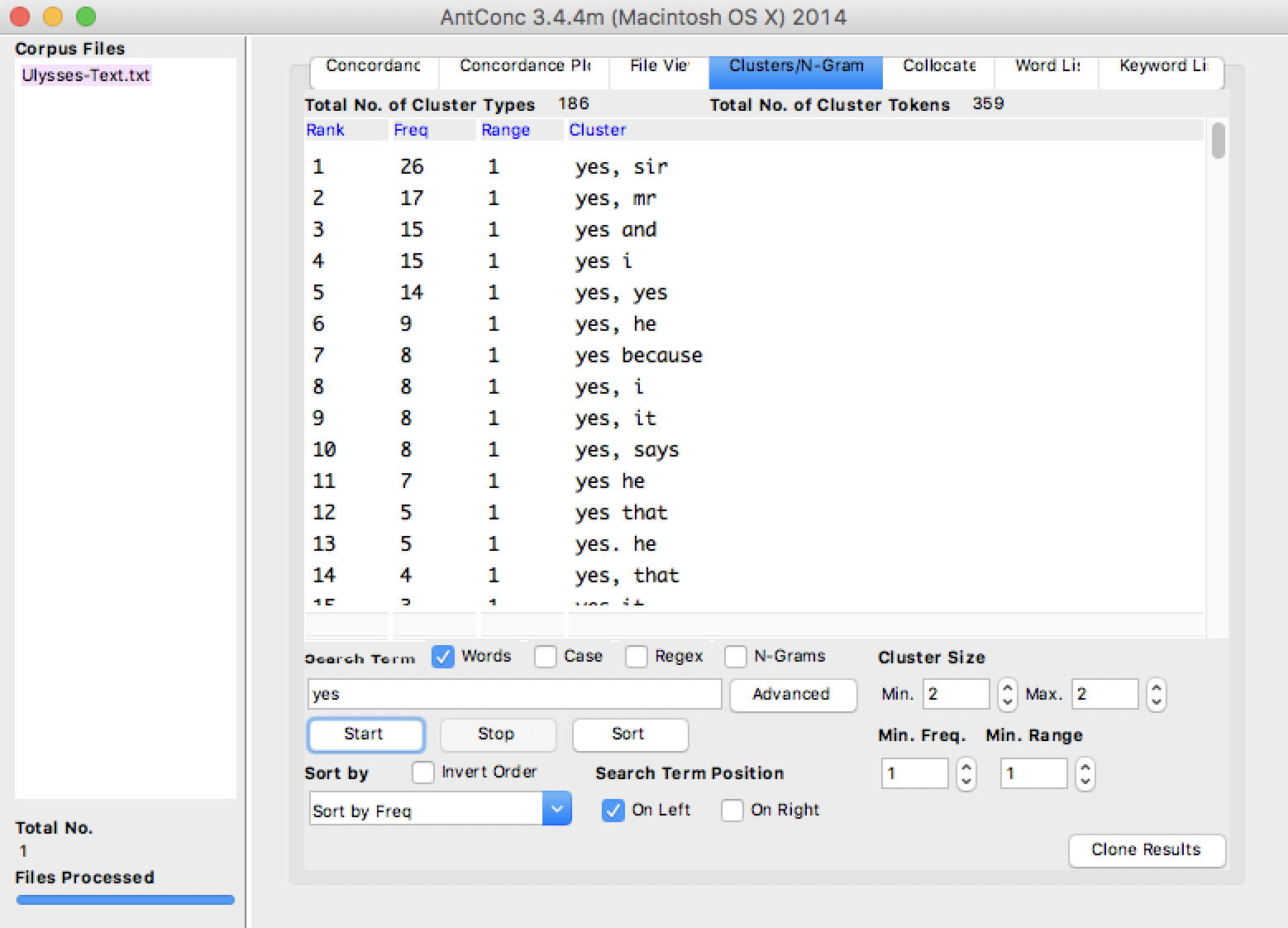miles-textanalysis
Texts as Data: Ulysses and Digital Analysis
Predictably, I chose James Joyce’s Ulysses for my test-runs on Voyant and AntConc.
Starting with Voyant, I was surprised to find certain terms in the Word Cloud. (I’ve come around to the general course opinion that Word Clouds don’t really mean much design-wise, but at least this one is a quick and clean visualization of frequency.)

In spite of the fact that Joyce uses dashes instead of quotation marks for his dialogue (or maybe because of this choice), “said” is the biggest word here. A few notable clusters: “eyes” and “look” (especially interesting considering Joyce’s growing blindness during composition); “day,” “time,” “night” (appropriate for the novel of a single day); and “way,” “going,” “came,” “round” (befitting character movements through the city).
In the chart depicting frequency over document segments, the most interesting spike is the rise in “Bloom” in segments 7-8. The reader follows Bloom through most of the novel, but we begin to see him more from other characters’ perspectives in the cluster of episodes “Sirens,” “Cyclops,” “Nausicaa,” “Oxen of the Sun”… I expect most of the spike is due to “Circe,” in which the word “Bloom” precedes each of his lines–as the chapter is in the style of a play.
Noting the prominence of “yes”–maybe the most famous word in Ulysses–I focused on that term in AntConc.

Above, we see the best-known uses of “yes,” in the final episode. “Yes” is often beside “and,” as a form of punctuation or conjunction. But these are not the only uses.

Since Molly’s “yes and” combinations occur in just one of 18 episodes, the majority are actually in bits of dialogue. This, combined with the prevalence of “said” noted in Voyant, makes me realize just how prominent interpersonal conversation is in a novel that’s purportedly an exhibition of stream-of-consciousness.
One last “yes” observation:

I was really surprised to see the blank space preceding episode 18, toward the end of this chart. After all, episode 17, “Ithaca,” is written in question-and-answer format. One would expect, then, to see a few more yes-es. But when I checked the concordance tab again, there were only three.
In general, I found AntConc more fine-grained in its analysis and more generative of interpretive ideas. But I may not have played around enough with Voyant to see all of its potential. AntConc, perhaps, could use more engaging graphics, but given the gimmicky nature of some of Voyant’s visualizations, maybe a simple presentation mode is actually more effective.